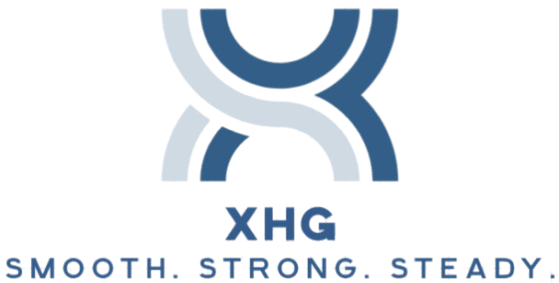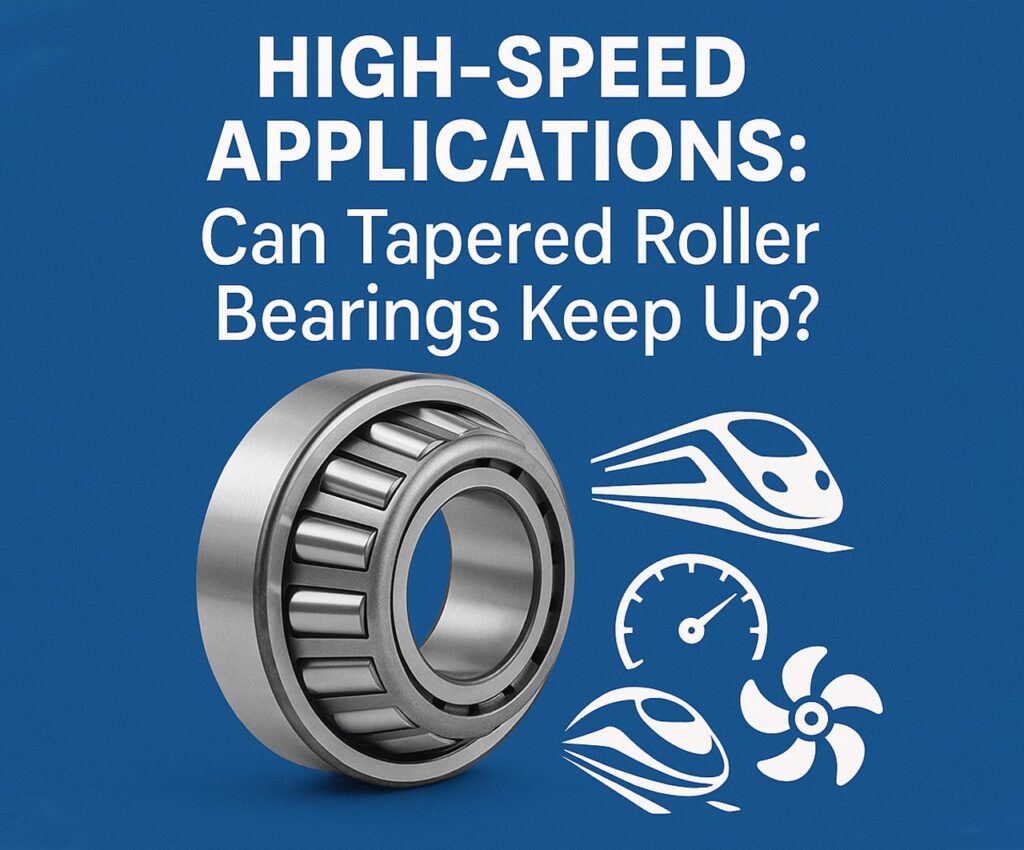In the world of high-speed industrial machinery, the question of whether a tapered roller bearing has what it takes to perform under extreme RPMs is more relevant than ever. With the increasing demands on precision systems, particularly in automotive, aerospace, and manufacturing sectors, engineers are taking a second look at tapered solutions. Whether it’s a single row tapered roller bearings used in a lightweight transmission or a robust 28x52x16 tapered roller bearing in a compact drivetrain assembly, tapered bearings are being pushed into scenarios once dominated by other bearing types. But can they really keep up? Know More
Understanding Tapered Roller Bearings
First, let’s strip it down to the basics. A tapered roller bearing has four key components: the inner ring (cone), the outer ring (cup), the tapered rollers, and the cage. The tapered geometry allows it to handle both radial and axial loads, which makes it highly adaptable in a range of heavy-duty applications.
What differentiates it from ball bearings or cylindrical bearings is the angular contact point. This design means that a tapered roller bearing has an inherent ability to support greater loads and manage misalignments better. That alone makes it a prime candidate for high-stress environments.
Speed vs. Load: A Classic Trade-Off
Here’s the catch. The same geometry that gives tapered roller bearings their legendary load-handling capability can work against them when it comes to speed. Due to the line contact of the rollers (compared to the point contact in ball bearings), tapered bearings generate more friction, which leads to more heat.
In high-speed applications, this frictional heat becomes the enemy. It can cause premature wear, lubricant breakdown, and even bearing seizure. However, not all is lost. Today’s engineering advances are narrowing the gap.
Optimizing for Speed
Manufacturers are now designing single row tapered roller bearings with high-speed performance in mind. Modifications like enhanced roller profiles, advanced cage designs, and superior materials are making them faster and more efficient. In particular, bearings like the 28x52x16 tapered roller bearing are engineered with precision ground surfaces, heat-resistant alloys, and optimized internal clearances to minimize friction.
Additionally, using ceramic rollers in place of steel can drastically reduce rolling resistance and improve high-speed capability. Hybrid tapered roller bearings are now entering industries where rotational velocity is as critical as load endurance.
Lubrication: The Critical Factor
Friction and speed always bring up one essential topic: lubrication. Even if a tapered roller bearing has a stellar design, it won’t survive without proper lubrication. At high speeds, oil mist and oil jet lubrication systems perform better than grease. These systems cool the bearing and reduce wear by constantly flushing out heat and contaminants.
Smart bearing systems now include sensors that monitor temperature and vibration in real time. This data helps predict failure and extend service intervals—a huge win for high-speed operations where downtime is unacceptable.
Applications That Push Limits
Here are some high-speed scenarios where single row tapered roller bearings are proving their mettle:
- Electric Vehicle Transmissions: These systems operate at higher RPMs than traditional combustion engines. The compact, efficient 28x52x16 tapered roller bearing is a perfect fit in such tight assemblies.
- Turbomachinery: High-speed turbines demand stability and load capacity, making hybrid tapered designs ideal.
- Machine Tools: Precision spindles using modified tapered bearings benefit from better rigidity and control.
Even motorsport vehicles are now testing the limits of tapered bearings. With cutting-edge materials and custom profiles, race engineers are finding that a tapered roller bearing has the resilience needed for high-speed stress when designed properly.
Managing Heat and Vibration
Excessive heat and vibration are the top enemies of any bearing system, especially under high RPMs. To combat this, manufacturers of single row tapered roller bearings are developing improved cage materials such as polyamide and phenolic composites, which are lighter and reduce centrifugal forces.
The 28x52x16 tapered roller bearing, for example, now comes in precision-balanced formats with enhanced surface finishes to reduce micro-vibrations and increase thermal stability. Pairing these bearings with thermally stable lubricants helps maintain operational integrity under continuous high-speed loads.
Design Matters: Internal Clearance and Preload
Not every tapered roller bearing has the same internal clearance. In high-speed applications, choosing the correct preload and clearance is a science. Too loose, and the bearing chatters. Too tight, and it overheats. Engineers must carefully calculate thermal expansion, speed rating, and load distribution.
Preloading becomes especially critical in spindle applications, where micron-level movement can affect machining accuracy. Controlled preload through matched bearing sets or spring-loaded mechanisms helps maintain rigidity and performance.
Tapered vs. Angular Contact Ball Bearings
Let’s settle the debate. In pure speed, angular contact ball bearings still lead due to lower friction. But the gap is closing. When an application demands both speed and axial load support, modern single row tapered roller bearings are catching up.
The reality is that a tapered roller bearing has versatility unmatched by many rivals. Where angular contact bearings might crack under misalignment or shock load, tapered bearings can absorb and keep running.
Real-World Innovations
Several manufacturers are now producing bearings that combine the best of both worlds:
- Low friction coatings: Applied to rollers and raceways to reduce heat
- Split inner rings: To improve heat dissipation and rotational balance
- Micro-finished surfaces: To lower friction at high speeds
Even the humble 28x52x16 tapered roller bearing now comes in versions that can withstand over 10,000 RPM—a speed once thought impossible for this format.
Selection Tips for Engineers
If you’re designing a high-speed system and thinking of using a tapered bearing, here are some tips:
- Work with trusted suppliers: Not every single row tapered roller bearing is optimized for high speed.
- Review dynamic load ratings: Ensure the bearing can handle your required RPM without compromising life.
- Prioritize lubrication planning: Use oil systems for anything above 6,000 RPM.
- Use modeling tools: Many suppliers provide simulation software to optimize preload and alignment.
- Consult experts: Let specialists help you spec a bearing—especially if you’re eyeing something like the 28x52x16 tapered roller bearing for a custom fit.
Final Thoughts
Yes, tapered roller bearings can keep up with high-speed demands—if they’re the right kind, configured properly, and maintained with the right lubrication strategy. The evolution of materials, design, and lubrication technologies means that even compact sizes like the 28x52x16 tapered roller bearing can perform at speeds previously off-limits.
Remember, a tapered roller bearing has the potential to outperform expectations when integrated smartly into your system. It’s not just about surviving the speed; it’s about thriving under it.
In the fast-paced future of manufacturing and mobility, single row tapered roller bearings are no longer the underdogs. They’re a smart, strategic option when selected with the full picture in mind. So, next time you’re spec’ing for speed, don’t overlook the tapered contender—it might just be your best bet.

